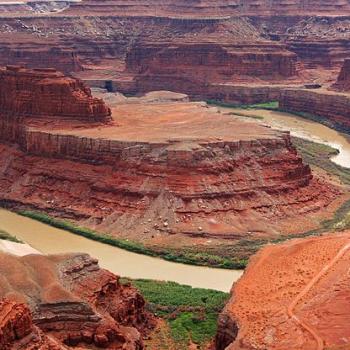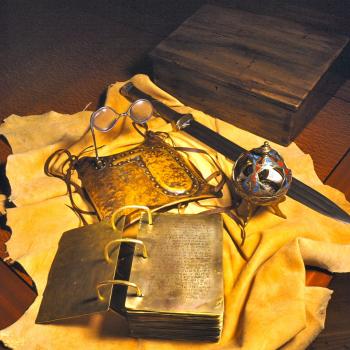
The search for extraterrestrial life has shifted. Martians are no longer the chief focus, despite earlier fascination with them.
Instead, scientists are looking for microbial life, and things of that sort. (“Algae, phone home!”) And on Europa, not on Mars.
Now, I’m aware of the fact that there’s life in Europe. I’ve met actual Belgians, Swiss, Germans, Italians, and even French.
Europa is one of the moons of Jupiter, and it seems the best place, right now, to search for currently-existing life beyond the sphere on which we dwell.
The thought is that life might have developed in several places during the 4.6 billion years since our solar system was formed. Mars and Venus probably had lots of liquid water — seemingly a requirement for any form of life that we can realistically imagine — but that was quite a few months ago. In the intervening period, as Van R. Kane puts it in an article in the current issue of Scientific American, “one became a hot hell and the other a frozen globe.”
Saturn’s moon Enceladus seems to have a substantial reservoir of water in liquid form, but scientific attention is focused nowadays on Europa, which is closer to us and to the sun. Europa’s ocean, located mostly below a thin crust of ice, may be a hundred kilometers (over sixty-two miles) deep, which means that, although Europa is significantly smaller than Earth, it may have twice as much liquid water. And that water may have been liquid from the very formation of Europa, which would yield quite enough time for biological life to arise.
Europa is rocky, which means that there are minerals and other life-essential elements available for water-born life. And nearby Jupiter, one of the giant planets, exercises enough pull on Europa to cause heat through “tidal flexing” and probably to stimulate volcanos. Which means that there could be rich ecosystems clustered around hydrothermal vents on the moon’s seafloor, as there are on Earth. The tidal forces also sometimes break the ice crust, permitting water to emerge onto the surface and even creating occasional water plumes.
Not quite what you picture as alien life when you were growing up. But potentially interesting, nonetheless.











